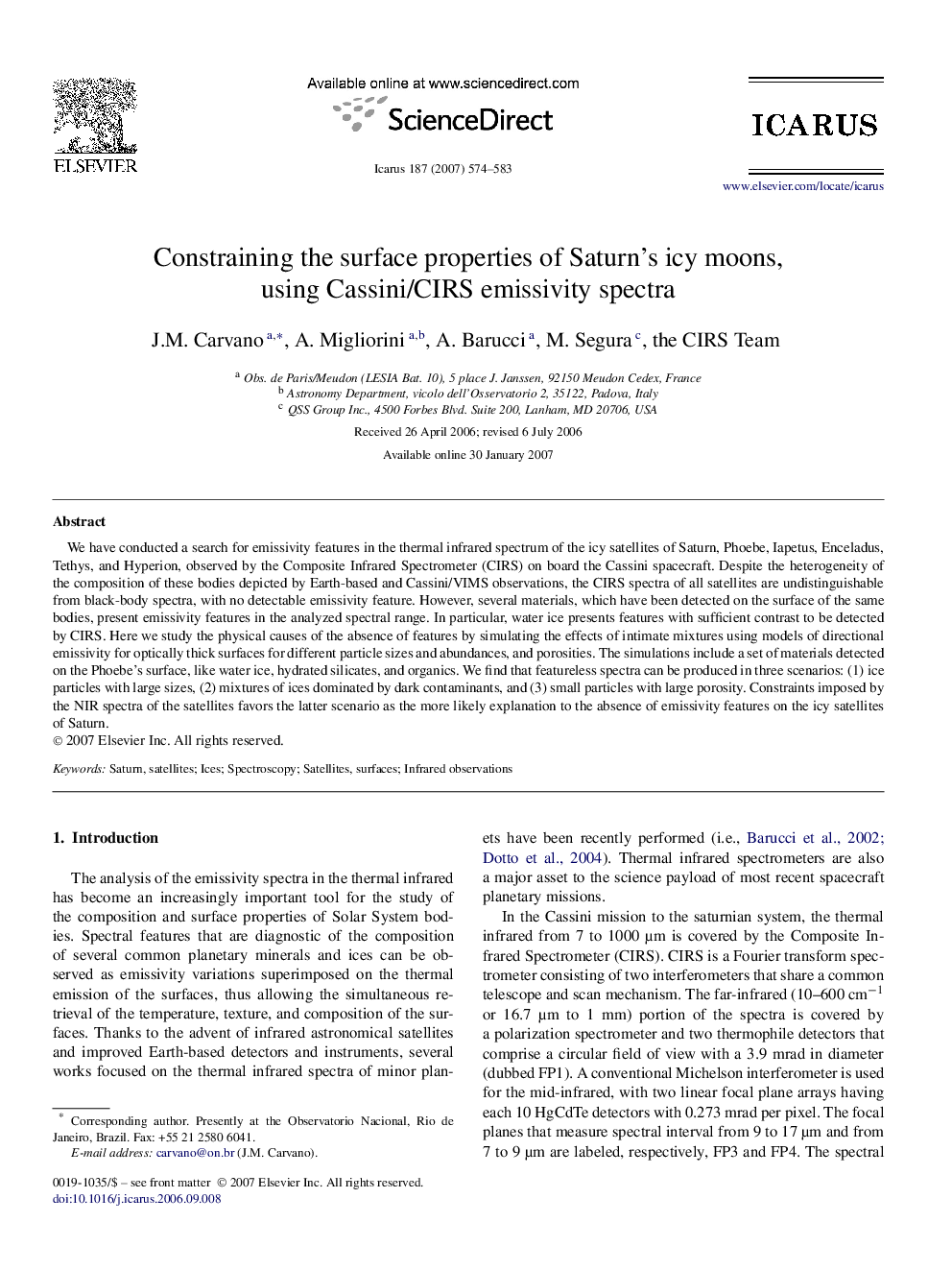| Article ID | Journal | Published Year | Pages | File Type |
|---|---|---|---|---|
| 1775430 | Icarus | 2007 | 10 Pages |
We have conducted a search for emissivity features in the thermal infrared spectrum of the icy satellites of Saturn, Phoebe, Iapetus, Enceladus, Tethys, and Hyperion, observed by the Composite Infrared Spectrometer (CIRS) on board the Cassini spacecraft. Despite the heterogeneity of the composition of these bodies depicted by Earth-based and Cassini/VIMS observations, the CIRS spectra of all satellites are undistinguishable from black-body spectra, with no detectable emissivity feature. However, several materials, which have been detected on the surface of the same bodies, present emissivity features in the analyzed spectral range. In particular, water ice presents features with sufficient contrast to be detected by CIRS. Here we study the physical causes of the absence of features by simulating the effects of intimate mixtures using models of directional emissivity for optically thick surfaces for different particle sizes and abundances, and porosities. The simulations include a set of materials detected on the Phoebe's surface, like water ice, hydrated silicates, and organics. We find that featureless spectra can be produced in three scenarios: (1) ice particles with large sizes, (2) mixtures of ices dominated by dark contaminants, and (3) small particles with large porosity. Constraints imposed by the NIR spectra of the satellites favors the latter scenario as the more likely explanation to the absence of emissivity features on the icy satellites of Saturn.
